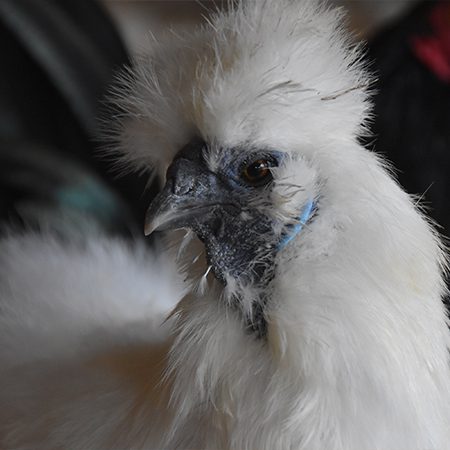Chicken
Gallus gallus domesticus
The chicken (Gallus gallus domesticus) is a type of domesticated fowl, a subspecies of the red junglefowl (Gallus gallus). They are one of the most common and widespread domestic animals, with a total population of more than 26 billion as of 2022. There are more chickens in the world than any other bird or domesticated fowl. Humans keep chickens primarily as a source of food (consuming both their meat and eggs) and, less commonly, as pets. Chickens are social birds and live together in flocks. They have a communal approach to the incubation of eggs and raising of young. Individual chickens in a flock will dominate others, establishing a "pecking order", with dominant individuals having priority for food access and nesting locations.
In the UK and Ireland, adult male chickens over the age of one year are primarily known as cocks, whereas in the United States, Canada, Australia and New Zealand, they are more commonly called roosters. Males less than a year old are cockerels. Females over a year old are known as hens, and younger females as pullets. Chickens are omnivores. In the wild, they often scratch at the soil to search for seeds, insects and even animals as large as lizards, small snakes or young mice. The average chicken may live for five to ten years, depending on the breed. Roosters can usually be differentiated from hens by their striking plumage of long flowing tails and shiny, pointed feathers on their necks (hackles) and backs (saddle), which are typically of brighter, bolder colours than those of females of the same breed.

Studies show that chickens first originated in Southeast Asia, ranging across ancient India. They’ve since been transported throughout the entire world.
HABITAT -Through years of domestication, farms and backyards have become their natural habitat.
DIET -They are omnivorous, eating grains, fruits, vegetables, and insects.
FUN FACT -There are more chickens on earth than people - a staggering 26 BILLION!
SOCIAL BEHAVIOR -They are social animals living in flocks. They are also kept as pets.
ACTIVITY -They are diurnal being most active during the day and resting during the evening.
PREDATORS -Predators include coyotes, foxes, raccoons, opossums, hawks, and dogs.
SIZE -Size can vary by breed, average weight is between 5 to 10 pounds.
RELATIVES -Studies show chickens to be close relations of dinosaurs, they are also related to other avian fowl like turkeys.
CONSERVATION -Chickens have not been evaluated by the IUCN and are not currently at risk.
Cub Creek Animal Care Information
Housing - Our chickens live in our luxurious barn! We have a few chicken coops and barn stalls that they regularly stay in. During the days, they get to roam around grazing the pastures. They will spend time pecking around and scratching at the ground. In the evening they make their way back into the coops / stalls filled with hay and shavings for bedding.
Diet - Our chickens are provided with a constant supply of game bird finisher feed, which provides them with all the nutrients they need to be healthy. Their enclosures also include Nelson water bowls that continuously provide fresh water for our birds.
Enrichment - Living in a multi-species enclosure provides our chickens with enrichment daily. During the summer, campers can make puzzle boxes out of cardboard to make finding food a bit more challenging.

